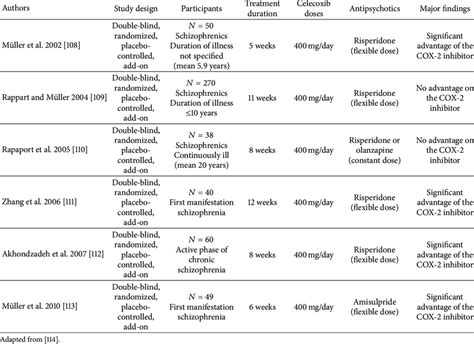Intro
Celecoxib provides effective pain relief, reducing inflammation and arthritis symptoms, with uses including treating osteoarthritis, rheumatoid arthritis, and menstrual cramps.
Pain relief is a crucial aspect of healthcare, and various medications have been developed to address this issue. Among these medications, celecoxib has gained significant attention in recent years due to its effectiveness in managing pain and reducing inflammation. As a selective COX-2 inhibitor, celecoxib has been widely used for pain relief in various conditions, including arthritis, menstrual cramps, and other inflammatory diseases. In this article, we will delve into the world of celecoxib, exploring its benefits, working mechanisms, and potential side effects, as well as providing practical examples and statistical data to support its use.
The importance of pain relief cannot be overstated, as it affects millions of people worldwide. Chronic pain, in particular, can have a significant impact on an individual's quality of life, causing emotional distress, disrupting daily activities, and affecting relationships. The development of effective pain relief medications like celecoxib has been a game-changer in the field of healthcare, offering new hope for those suffering from debilitating pain. With its unique mechanism of action and relatively favorable side effect profile, celecoxib has become a popular choice among healthcare professionals and patients alike.
As we explore the topic of celecoxib and its use for pain relief, it is essential to understand the underlying mechanisms that make this medication so effective. Celecoxib works by inhibiting the production of prostaglandins, which are hormone-like substances that cause pain and inflammation in the body. By selectively blocking the COX-2 enzyme, celecoxib reduces the production of these prostaglandins, resulting in decreased pain and inflammation. This targeted approach has made celecoxib a valuable tool in the management of various pain-related conditions, including osteoarthritis, rheumatoid arthritis, and ankylosing spondylitis.
Celecoxib Mechanism of Action

Celecoxib Pharmacokinetics
The pharmacokinetics of celecoxib are characterized by its rapid absorption, extensive distribution, and hepatic metabolism. The medication is primarily metabolized by the CYP2C9 enzyme, which can affect its plasma concentrations and half-life. Understanding the pharmacokinetics of celecoxib is essential for optimizing its dosing regimen and minimizing the risk of adverse effects. Factors such as age, renal function, and concomitant medications can influence the pharmacokinetics of celecoxib, highlighting the need for individualized treatment plans.Celecoxib Benefits and Uses

Celecoxib Indications and Contraindications
Celecoxib is indicated for the treatment of various pain-related conditions, including osteoarthritis, rheumatoid arthritis, and ankylosing spondylitis. The medication is also approved for the treatment of primary dysmenorrhea and acute pain management. However, celecoxib is contraindicated in patients with a known hypersensitivity to the medication or any of its ingredients. Additionally, celecoxib should be used with caution in patients with a history of gastrointestinal disease, renal impairment, or cardiovascular disease.Celecoxib Side Effects and Interactions

Celecoxib Dosage and Administration
The dosage and administration of celecoxib vary depending on the indication and patient population. For osteoarthritis, the recommended dose is 200 mg once daily or 100 mg twice daily. For rheumatoid arthritis, the recommended dose is 100 mg to 200 mg twice daily. Celecoxib should be taken with food to reduce the risk of gastrointestinal side effects. The medication's dosage and administration should be adjusted according to the patient's response and tolerability.Celecoxib Precautions and Warnings

Celecoxib Overdose and Toxicity
Celecoxib overdose and toxicity can occur if the medication is taken in excess or in combination with other medications. Symptoms of celecoxib overdose include nausea, vomiting, and abdominal pain. In severe cases, celecoxib overdose can lead to gastrointestinal bleeding, renal impairment, and cardiovascular events. Treatment of celecoxib overdose and toxicity involves supportive care and monitoring of vital signs.Celecoxib Alternatives and Comparisons

Celecoxib Efficacy and Safety
Celecoxib efficacy and safety have been extensively studied in various clinical trials. The medication has been shown to be effective in reducing pain and inflammation in patients with osteoarthritis, rheumatoid arthritis, and ankylosing spondylitis. Celecoxib safety has also been evaluated, with the medication demonstrating a relatively favorable side effect profile compared to non-selective COX inhibitors. However, celecoxib can cause serious side effects, such as cardiovascular events and gastrointestinal bleeding, which should be carefully monitored.Celecoxib Clinical Trials and Research

Celecoxib Future Directions
Celecoxib future directions involve the development of new formulations, such as topical and injectable forms, which can improve the medication's delivery and efficacy. Additionally, research is being conducted to identify new indications for celecoxib, such as the treatment of cancer and inflammatory bowel disease. The medication's potential for use in combination with other therapies, such as biologics and disease-modifying antirheumatic drugs, is also being explored.What is celecoxib used for?
+Celecoxib is used for pain relief in various conditions, including osteoarthritis, rheumatoid arthritis, ankylosing spondylitis, and primary dysmenorrhea.
How does celecoxib work?
+Celecoxib works by selectively inhibiting the COX-2 enzyme, which reduces the production of prostaglandins and subsequent pain and inflammation.
What are the common side effects of celecoxib?
+Common side effects of celecoxib include gastrointestinal symptoms, such as nausea and diarrhea, as well as headache and dizziness.
Can celecoxib be used in combination with other medications?
+Celecoxib can be used in combination with other medications, but caution should be exercised to minimize the risk of adverse effects.
What are the precautions and warnings for celecoxib?
+Celecoxib precautions and warnings include the risk of cardiovascular events, gastrointestinal bleeding, and renal impairment, which should be carefully monitored.
In conclusion, celecoxib is a valuable medication for pain relief, offering a unique mechanism of action and relatively favorable side effect profile. Its use in various conditions, including osteoarthritis, rheumatoid arthritis, and ankylosing spondylitis, has been well-established. However, celecoxib can cause side effects and interact with other medications, highlighting the need for careful monitoring and individualized treatment plans. As research continues to evolve, we can expect to see new developments in celecoxib's use and efficacy, ultimately improving pain management for millions of people worldwide. We invite you to share your thoughts and experiences with celecoxib, and to explore the many resources available for managing pain and improving overall health.
